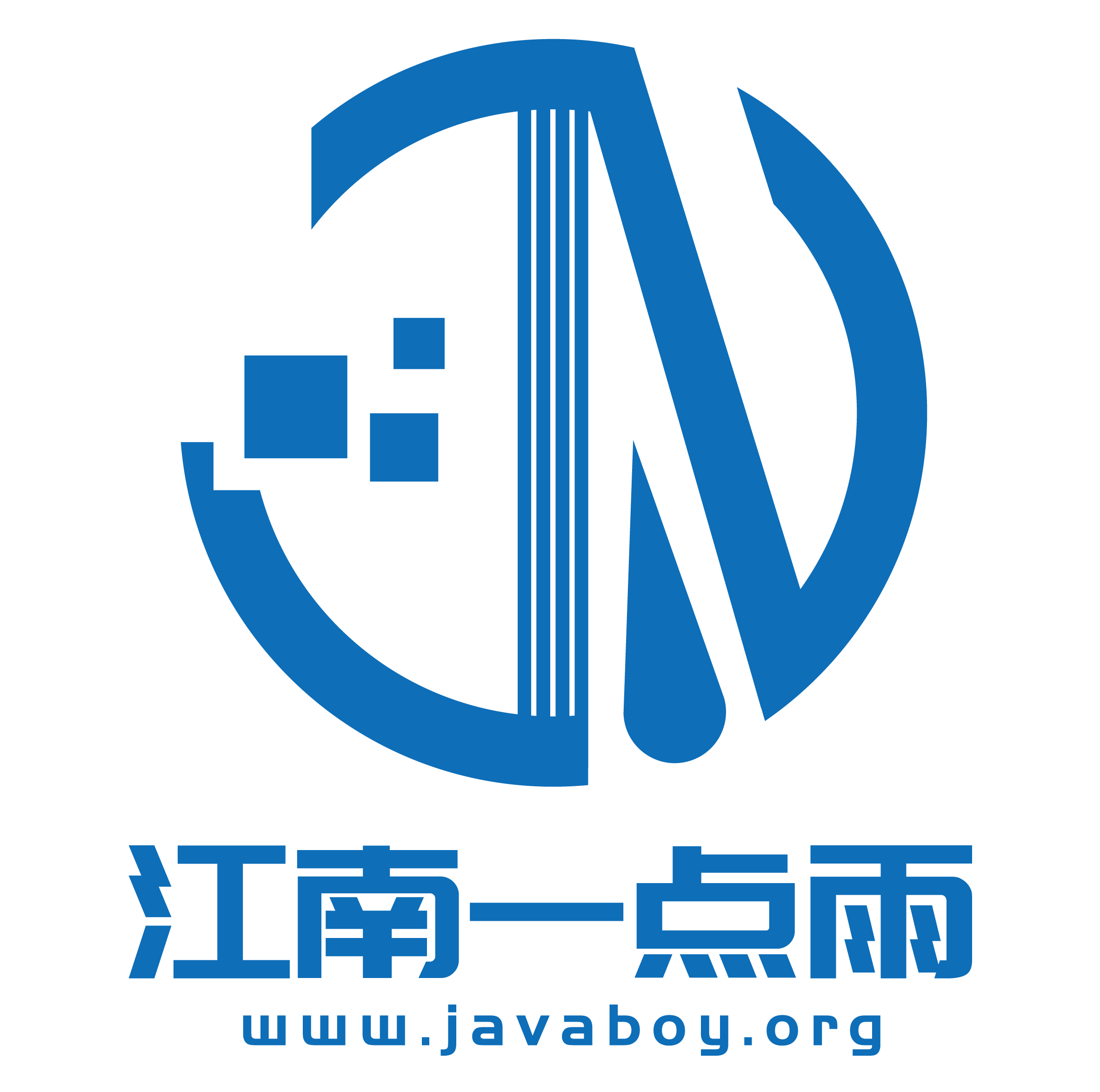3.1 Ioc
3.1.1 Ioc 概念
Ioc (Inversion of Control),中文叫做控制反转。这是一个概念,也是一种思想。控制反转,实际上就是指对一个对象的控制权的反转。例如,如下代码:
public class Book {
private Integer id;
private String name;
private Double price;
//省略getter/setter
}
public class User {
private Integer id;
private String name;
private Integer age;
public void doSth() {
Book book = new Book();
book.setId(1);
book.setName("故事新编");
book.setPrice((double) 20);
}
}
在这种情况下,Book 对象的控制权在 User 对象里边,这样,Book 和 User 高度耦合,如果在其他对象中需要使用 Book 对象,得重新创建,也就是说,对象的创建、初始化、销毁等操作,统统都要开发者自己来完成。如果能够将这些操作交给容器来管理,开发者就可以极大的从对象的创建中解脱出来。
使用 Spring 之后,我们可以将对象的创建、初始化、销毁等操作交给 Spring 容器来管理。就是说,在项目启动时,所有的 Bean 都将自己注册到 Spring 容器中去(如果有必要的话),然后如果其他 Bean 需要使用到这个 Bean ,则不需要自己去 new,而是直接去 Spring 容器去要。
通过一个简单的例子看下这个过程。
3.1.2 Ioc 初体验
首先创建一个普通的 Maven 项目,然后引入 spring-context 依赖,如下:
<dependencies>
<dependency>
<groupId>org.springframework</groupId>
<artifactId>spring-context</artifactId>
<version>5.1.9.RELEASE</version>
</dependency>
</dependencies>
接下来,在 resources 目录下创建一个 spring 的配置文件(注意,一定要先添加依赖,后创建配置文件,否则创建配置文件时,没有模板选项):
<?xml version="1.0" encoding="UTF-8"?>
<beans xmlns="http://www.springframework.org/schema/beans"
xmlns:xsi="http://www.w3.org/2001/XMLSchema-instance"
xsi:schemaLocation="http://www.springframework.org/schema/beans http://www.springframework.org/schema/beans/spring-beans.xsd">
</beans>
在这个文件中,我们可以配置所有需要注册到 Spring 容器的 Bean:
<?xml version="1.0" encoding="UTF-8"?>
<beans xmlns="http://www.springframework.org/schema/beans"
xmlns:xsi="http://www.w3.org/2001/XMLSchema-instance"
xsi:schemaLocation="http://www.springframework.org/schema/beans http://www.springframework.org/schema/beans/spring-beans.xsd">
<bean class="org.javaboy.Book" id="book"/>
</beans>
class 属性表示需要注册的 bean 的全路径,id 则表示 bean 的唯一标记,也开可以 name 属性作为 bean 的标记,在超过 99% 的情况下,id 和 name 其实是一样的,特殊情况下不一样。
接下来,加载这个配置文件:
public class Main {
public static void main(String[] args) {
ClassPathXmlApplicationContext ctx = new ClassPathXmlApplicationContext("applicationContext.xml");
}
}
执行 main 方法,配置文件就会被自动加载,进而在 Spring 中初始化一个 Book 实例。此时,我们显式的指定 Book 类的无参构造方法,并在无参构造方法中打印日志,可以看到无参构造方法执行了,进而证明对象已经在 Spring 容器中初始化了。
最后,通过 getBean 方法,可以从容器中去获取对象:
public class Main {
public static void main(String[] args) {
ClassPathXmlApplicationContext ctx = new ClassPathXmlApplicationContext("applicationContext.xml");
Book book = (Book) ctx.getBean("book");
System.out.println(book);
}
}
加载方式,除了ClassPathXmlApplicationContext 之外(去 classpath 下查找配置文件),另外也可以使用 FileSystemXmlApplicationContext ,FileSystemXmlApplicationContext 会从操作系统路径下去寻找配置文件。
public class Main {
public static void main(String[] args) {
FileSystemXmlApplicationContext ctx = new FileSystemXmlApplicationContext("F:\\workspace5\\workspace\\spring\\spring-ioc\\src\\main\\resources\\applicationContext.xml");
Book book = (Book) ctx.getBean("book");
System.out.println(book);
}
}
3.2 Bean 的获取
在上一小节中,我们通过 ctx.getBean 方法来从 Spring 容器中获取 Bean,传入的参数是 Bean 的 name 或者 id 属性。除了这种方式之外,也可以直接通过 Class 去获取一个 Bean。
public class Main {
public static void main(String[] args) {
ClassPathXmlApplicationContext ctx = new ClassPathXmlApplicationContext("applicationContext.xml");
Book book = ctx.getBean(Book.class);
System.out.println(book);
}
}
这种方式有一个很大的弊端,如果存在多个实例,这种方式就不可用,例如,xml 文件中存在两个 Bean:
<?xml version="1.0" encoding="UTF-8"?>
<beans xmlns="http://www.springframework.org/schema/beans"
xmlns:xsi="http://www.w3.org/2001/XMLSchema-instance"
xsi:schemaLocation="http://www.springframework.org/schema/beans http://www.springframework.org/schema/beans/spring-beans.xsd">
<bean class="org.javaboy.Book" id="book"/>
<bean class="org.javaboy.Book" id="book2"/>
</beans>
此时,如果通过 Class 去查找 Bean,会报如下错误:

所以,一般建议使用 name 或者 id 去获取 Bean 的实例。
3.3 属性的注入
在 XML 配置中,属性的注入存在多种方式。
3.3.1 构造方法注入
通过 Bean 的构造方法给 Bean 的属性注入值。
1.第一步首先给 Bean 添加对应的构造方法:
public class Book {
private Integer id;
private String name;
private Double price;
public Book() {
System.out.println("-------book init----------");
}
public Book(Integer id, String name, Double price) {
this.id = id;
this.name = name;
this.price = price;
}
}
2.在 xml 文件中注入 Bean
<?xml version="1.0" encoding="UTF-8"?>
<beans xmlns="http://www.springframework.org/schema/beans"
xmlns:xsi="http://www.w3.org/2001/XMLSchema-instance"
xsi:schemaLocation="http://www.springframework.org/schema/beans http://www.springframework.org/schema/beans/spring-beans.xsd">
<bean class="org.javaboy.Book" id="book">
<constructor-arg index="0" value="1"/>
<constructor-arg index="1" value="三国演义"/>
<constructor-arg index="2" value="30"/>
</bean>
</beans>
这里需要注意的是,constructor-arg 中的 index 和 Book 中的构造方法参数一一对应。写的顺序可以颠倒,但是 index 的值和 value 要一一对应。
另一种构造方法中的属性注入,则是通过直接指定参数名来注入:
<bean class="org.javaboy.Book" id="book2">
<constructor-arg name="id" value="2"/>
<constructor-arg name="name" value="红楼梦"/>
<constructor-arg name="price" value="40"/>
</bean>
如果有多个构造方法,则会根据给出参数个数以及参数类型,自动匹配到对应的构造方法上,进而初始化一个对象。
3.3.2 set 方法注入
除了构造方法之外,我们也可以通过 set 方法注入值。
<bean class="org.javaboy.Book" id="book3">
<property name="id" value="3"/>
<property name="name" value="水浒传"/>
<property name="price" value="30"/>
</bean>
set 方法注入,有一个很重要的问题,就是属性名。很多人会有一种错觉,觉得属性名就是你定义的属性名,这个是不对的。在所有的框架中,凡是涉及到反射注入值的,属性名统统都不是 Bean 中定义的属性名,而是通过 Java 中的内省机制分析出来的属性名,简单说,就是根据 get/set 方法分析出来的属性名。
3.3.3 p 名称空间注入
p 名称空间注入,使用的比较少,它本质上也是调用了 set 方法。
<bean class="org.javaboy.Book" id="book4" p:id="4" p:bookName="西游记" p:price="33"></bean>
3.3.4 外部 Bean 的注入
有时候,我们使用一些外部 Bean,这些 Bean 可能没有构造方法,而是通过 Builder 来构造的,这个时候,就无法使用上面的方式来给它注入值了。
例如在 OkHttp 的网络请求中,原生的写法如下:
public class OkHttpMain {
public static void main(String[] args) {
OkHttpClient okHttpClient = new OkHttpClient.Builder()
.build();
Request request = new Request.Builder()
.get()
.url("http://b.hiphotos.baidu.com/image/h%3D300/sign=ad628627aacc7cd9e52d32d909032104/32fa828ba61ea8d3fcd2e9ce9e0a304e241f5803.jpg")
.build();
Call call = okHttpClient.newCall(request);
call.enqueue(new Callback() {
@Override
public void onFailure(@NotNull Call call, @NotNull IOException e) {
System.out.println(e.getMessage());
}
@Override
public void onResponse(@NotNull Call call, @NotNull Response response) throws IOException {
FileOutputStream out = new FileOutputStream(new File("E:\\123.jpg"));
int len;
byte[] buf = new byte[1024];
InputStream is = response.body().byteStream();
while ((len = is.read(buf)) != -1) {
out.write(buf, 0, len);
}
out.close();
is.close();
}
});
}
}
这个 Bean 有一个特点,OkHttpClient 和 Request 两个实例都不是直接 new 出来的,在调用 Builder 方法的过程中,都会给它配置一些默认的参数。这种情况,我们可以使用 静态工厂注入或者实例工厂注入来给 OkHttpClient 提供一个实例。
1.静态工厂注入
首先提供一个 OkHttpClient 的静态工厂:
public class OkHttpUtils {
private static OkHttpClient OkHttpClient;
public static OkHttpClient getInstance() {
if (OkHttpClient == null) {
OkHttpClient = new OkHttpClient.Builder().build();
}
return OkHttpClient;
}
}
在 xml 文件中,配置该静态工厂:
<bean class="org.javaboy.OkHttpUtils" factory-method="getInstance" id="okHttpClient"></bean>
这个配置表示 OkHttpUtils 类中的 getInstance 是我们需要的实例,实例的名字就叫 okHttpClient。然后,在 Java 代码中,获取到这个实例,就可以直接使用了。
public class OkHttpMain {
public static void main(String[] args) {
ClassPathXmlApplicationContext ctx = new ClassPathXmlApplicationContext("applicationContext.xml");
OkHttpClient okHttpClient = ctx.getBean("okHttpClient", OkHttpClient.class);
Request request = new Request.Builder()
.get()
.url("http://b.hiphotos.baidu.com/image/h%3D300/sign=ad628627aacc7cd9e52d32d909032104/32fa828ba61ea8d3fcd2e9ce9e0a304e241f5803.jpg")
.build();
Call call = okHttpClient.newCall(request);
call.enqueue(new Callback() {
@Override
public void onFailure(@NotNull Call call, @NotNull IOException e) {
System.out.println(e.getMessage());
}
@Override
public void onResponse(@NotNull Call call, @NotNull Response response) throws IOException {
FileOutputStream out = new FileOutputStream(new File("E:\\123.jpg"));
int len;
byte[] buf = new byte[1024];
InputStream is = response.body().byteStream();
while ((len = is.read(buf)) != -1) {
out.write(buf, 0, len);
}
out.close();
is.close();
}
});
}
}
2.实例工厂注入
实例工厂就是工厂方法是一个实例方法,这样,工厂类必须实例化之后才可以调用工厂方法。
这次的工厂类如下:
public class OkHttpUtils {
private OkHttpClient OkHttpClient;
public OkHttpClient getInstance() {
if (OkHttpClient == null) {
OkHttpClient = new OkHttpClient.Builder().build();
}
return OkHttpClient;
}
}
此时,在 xml 文件中,需要首先提供工厂方法的实例,然后才可以调用工厂方法:
<bean class="org.javaboy.OkHttpUtils" id="okHttpUtils"/>
<bean class="okhttp3.OkHttpClient" factory-bean="okHttpUtils" factory-method="getInstance" id="okHttpClient"></bean>
自己写的 Bean 一般不会使用这两种方式注入,但是,如果需要引入外部 jar,外部 jar 的类的初始化,有可能需要使用这两种方式。
3.4 复杂属性的注入
3.4.1 对象注入
<bean class="org.javaboy.User" id="user">
<property name="cat" ref="cat"/>
</bean>
<bean class="org.javaboy.Cat" id="cat">
<property name="name" value="小白"/>
<property name="color" value="白色"/>
</bean>
可以通过 xml 注入对象,通过 ref 来引用一个对象。
3.4.2 数组注入
数组注入和集合注入在 xml 中的配置是一样的。如下:
<bean class="org.javaboy.User" id="user">
<property name="cat" ref="cat"/>
<property name="favorites">
<array>
<value>足球</value>
<value>篮球</value>
<value>乒乓球</value>
</array>
</property>
</bean>
<bean class="org.javaboy.Cat" id="cat">
<property name="name" value="小白"/>
<property name="color" value="白色"/>
</bean>
注意,array 节点,也可以被 list 节点代替。
当然,array 或者 list 节点中也可以是对象。
<bean class="org.javaboy.User" id="user">
<property name="cat" ref="cat"/>
<property name="favorites">
<list>
<value>足球</value>
<value>篮球</value>
<value>乒乓球</value>
</list>
</property>
<property name="cats">
<list>
<ref bean="cat"/>
<ref bean="cat2"/>
<bean class="org.javaboy.Cat" id="cat3">
<property name="name" value="小花"/>
<property name="color" value="花色"/>
</bean>
</list>
</property>
</bean>
<bean class="org.javaboy.Cat" id="cat">
<property name="name" value="小白"/>
<property name="color" value="白色"/>
</bean>
<bean class="org.javaboy.Cat" id="cat2">
<property name="name" value="小黑"/>
<property name="color" value="黑色"/>
</bean>
注意,即可以通过 ref 使用外部定义好的 Bean,也可以直接在 list 或者 array 节点中定义 bean。
3.4.3 Map 注入
<property name="map">
<map>
<entry key="age" value="99"/>
<entry key="name" value="javaboy"/>
</map>
</property>
3.4.4 Properties 注入
<property name="info">
<props>
<prop key="age">99</prop>
<prop key="name">javaboy</prop>
</props>
</property>
以上 Demo,定义的 User 如下:
public class User {
private Integer id;
private String name;
private Integer age;
private Cat cat;
private String[] favorites;
private List<Cat> cats;
private Map<String,Object> map;
private Properties info;
@Override
public String toString() {
return "User{" +
"id=" + id +
", name='" + name + '\'' +
", age=" + age +
", cat=" + cat +
", favorites=" + Arrays.toString(favorites) +
", cats=" + cats +
", map=" + map +
", info=" + info +
'}';
}
public Properties getInfo() {
return info;
}
public void setInfo(Properties info) {
this.info = info;
}
public Map<String, Object> getMap() {
return map;
}
public void setMap(Map<String, Object> map) {
this.map = map;
}
public List<Cat> getCats() {
return cats;
}
public void setCats(List<Cat> cats) {
this.cats = cats;
}
public String[] getFavorites() {
return favorites;
}
public void setFavorites(String[] favorites) {
this.favorites = favorites;
}
public User() {
}
public User(Integer id, String name, Integer age, Cat cat) {
this.id = id;
this.name = name;
this.age = age;
this.cat = cat;
}
public Cat getCat() {
return cat;
}
public void setCat(Cat cat) {
this.cat = cat;
}
public Integer getId() {
return id;
}
public void setId(Integer id) {
this.id = id;
}
public String getName() {
return name;
}
public void setName(String name) {
this.name = name;
}
public Integer getAge() {
return age;
}
public void setAge(Integer age) {
this.age = age;
}
}
3.5 Java 配置
在 Spring 中,想要将一个 Bean 注册到 Spring 容器中,整体上来说,有三种不同的方式。
- XML 注入,如前文所说
- Java 配置(通过 Java 代码将 Bean 注册到 Spring 容器中)
- 自动化扫描
这里我们来看 Java 配置。
Java 配置这种方式在 Spring Boot 出现之前,其实很少使用,自从有了 Spring Boot,Java 配置开发被广泛使用,因为在 Spring Boot 中,不使用一行 XML 配置。
例如我有如下一个 Bean:
public class SayHello {
public String sayHello(String name) {
return "hello " + name;
}
}
在 Java 配置中,我们用一个 Java 配置类去代替之前的 applicationContext.xml 文件。
@Configuration
public class JavaConfig {
@Bean
SayHello sayHello() {
return new SayHello();
}
}
首先在配置类上有一个 @Configuration 注解,这个注解表示这个类不是一个普通类,而是一个配置类,它的作用相当于 applicationContext.xml。
然后,定义方法,方法返回对象,方法上添加 @Bean 注解,表示将这个方法的返回值注入的 Spring 容器中去。也就是说,@Bean 所对应的方法,就相当于 applicationContext.xml 中的 bean 节点。
既然是配置类,我们需要在项目启动时加载配置类。
public class Main {
public static void main(String[] args) {
AnnotationConfigApplicationContext ctx = new AnnotationConfigApplicationContext(JavaConfig.class);
SayHello hello = ctx.getBean(SayHello.class);
System.out.println(hello.sayHello("javaboy"));
}
}
注意,配置的加载,是使用 AnnotationConfigApplicationContext 来实现。
关于 Java 配置,这里有一个需要注意的问题:Bean 的名字是什么?
Bean 的默认名称是方法名。以上面的案例为例,Bean 的名字是 sayHello。
如果开发者想自定义方法名,也是可以的,直接在 @Bean 注解中进行过配置。如下配置表示修改 Bean 的名字为 javaboy:
@Configuration
public class JavaConfig {
@Bean("javaboy")
SayHello sayHello() {
return new SayHello();
}
}
3.6 自动化配置
在我们实际开发中,大量的使用自动配置。
自动化配置既可以通过 Java 配置来实现,也可以通过 xml 配置来实现。
3.6.1 准备工作
例如我有一个 UserService,我希望在自动化扫描时,这个类能够自动注册到 Spring 容器中去,那么可以给该类添加一个 @Service,作为一个标记。
和 @Service 注解功能类似的注解,一共有四个:
- @Component
- @Repository
- @Service
- @Controller
这四个中,另外三个都是基于 @Component 做出来的,而且从目前的源码来看,功能也是一致的,那么为什么要搞三个呢?主要是为了在不同的类上面添加时方便。
- 在 Service 层上,添加注解时,使用 @Service
- 在 Dao 层,添加注解时,使用 @Repository
- 在 Controller 层,添加注解时,使用 @Controller
- 在其他组件上添加注解时,使用 @Component
@Service
public class UserService {
public List<String> getAllUser() {
List<String> users = new ArrayList<>();
for (int i = 0; i < 10; i++) {
users.add("javaboy:" + i);
}
return users;
}
}
添加完成后,自动化扫描有两种方式,一种就是通过 Java 代码配置自动化扫描,另一种则是通过 xml 文件来配置自动化扫描。
3.6.2 Java 代码配置自动扫描
@Configuration
@ComponentScan(basePackages = "org.javaboy.javaconfig.service")
public class JavaConfig {
}
然后,在项目启动中加载配置类,在配置类中,通过 @ComponentScan 注解指定要扫描的包(如果不指定,默认情况下扫描的是配置类所在的包下载的 Bean 以及配置类所在的包下的子包下的类),然后就可以获取 UserService 的实例了:
public class Main {
public static void main(String[] args) {
AnnotationConfigApplicationContext ctx = new AnnotationConfigApplicationContext(JavaConfig.class);
UserService userService = ctx.getBean(UserService.class);
System.out.println(userService.getAllUser());
}
}
这里有几个问题需要注意:
1.Bean 的名字叫什么?
默认情况下,Bean 的名字是类名首字母小写。例如上面的 UserService,它的实例名,默认就是 userService。如果开发者想要自定义名字,就直接在 @Service 注解中添加即可。
2.有几种扫描方式?
上面的配置,我们是按照包的位置来扫描的。也就是说,Bean 必须放在指定的扫描位置,否则,即使你有 @Service 注解,也扫描不到。
除了按照包的位置来扫描,还有另外一种方式,就是根据注解来扫描。例如如下配置:
@Configuration
@ComponentScan(basePackages = "org.javaboy.javaconfig",useDefaultFilters = true,excludeFilters = {@ComponentScan.Filter(type = FilterType.ANNOTATION,classes = Controller.class)})
public class JavaConfig {
}
这个配置表示扫描 org.javaboy.javaconfig 下的所有 Bean,但是除了 Controller。
3.6.3 XML 配置自动化扫描
<context:component-scan base-package="org.javaboy.javaconfig"/>
上面这行配置表示扫描 org.javaboy.javaconfig 下的所有 Bean。当然也可以按照类来扫描。
XML 配置完成后,在 Java 代码中加载 XML 配置即可。
public class XMLTest {
public static void main(String[] args) {
ClassPathXmlApplicationContext ctx = new ClassPathXmlApplicationContext("applicationContext.xml");
UserService userService = ctx.getBean(UserService.class);
List<String> list = userService.getAllUser();
System.out.println(list);
}
}
也可以在 XML 配置中按照注解的类型进行扫描:
<context:component-scan base-package="org.javaboy.javaconfig" use-default-filters="true">
<context:exclude-filter type="annotation" expression="org.springframework.stereotype.Controller"/>
</context:component-scan>
3.6.4 对象注入
自动扫描时的对象注入有三种方式:
- @Autowired
- @Resources
- @Injected
@Autowired 是根据类型去查找,然后赋值,这就有一个要求,这个类型只可以有一个对象,否则就会报错。@Resources 是根据名称去查找,默认情况下,定义的变量名,就是查找的名称,当然开发者也可以在 @Resources 注解中手动指定。所以,如果一个类存在多个实例,那么就应该使用 @Resources 去注入,如果非常使用 @Autowired,也是可以的,此时需要配合另外一个注解,@Qualifier,在 @Qualifier 中可以指定变量名,两个一起用(@Qualifier 和 @Autowired)就可以实现通过变量名查找到变量。
@Service
public class UserService {
@Autowired
UserDao userDao;
public String hello() {
return userDao.hello();
}
public List<String> getAllUser() {
List<String> users = new ArrayList<>();
for (int i = 0; i < 10; i++) {
users.add("javaboy:" + i);
}
return users;
}
}
3.7 条件注解
条件注解就是在满足某一个条件的情况下,生效的配置。
3.7.1 条件注解
首先在 Windows 中如何获取操作系统信息?Windows 中查看文件夹目录的命令是 dir,Linux 中查看文件夹目录的命令是 ls,我现在希望当系统运行在 Windows 上时,自动打印出 Windows 上的目录展示命令,Linux 运行时,则自动展示 Linux 上的目录展示命令。
首先定义一个显示文件夹目录的接口:
public interface ShowCmd {
String showCmd();
}
然后,分别实现 Windows 下的实例和 Linux 下的实例:
public class WinShowCmd implements ShowCmd {
@Override
public String showCmd() {
return "dir";
}
}
public class LinuxShowCmd implements ShowCmd {
@Override
public String showCmd() {
return "ls";
}
}
接下来,定义两个条件,一个是 Windows 下的条件,另一个是 Linux 下的条件。
public class WindowsCondition implements Condition {
@Override
public boolean matches(ConditionContext context, AnnotatedTypeMetadata metadata) {
return context.getEnvironment().getProperty("os.name").toLowerCase().contains("windows");
}
}
public class LinuxCondition implements Condition {
@Override
public boolean matches(ConditionContext context, AnnotatedTypeMetadata metadata) {
return context.getEnvironment().getProperty("os.name").toLowerCase().contains("linux");
}
}
接下来,在定义 Bean 的时候,就可以去配置条件注解了。
@Configuration
public class JavaConfig {
@Bean("showCmd")
@Conditional(WindowsCondition.class)
ShowCmd winCmd() {
return new WinShowCmd();
}
@Bean("showCmd")
@Conditional(LinuxCondition.class)
ShowCmd linuxCmd() {
return new LinuxShowCmd();
}
}
这里,一定要给两个 Bean 取相同的名字,这样在调用时,才可以自动匹配。然后,给每一个 Bean 加上条件注解,当条件中的 matches 方法返回 true 的时候,这个 Bean 的定义就会生效。
public class JavaMain {
public static void main(String[] args) {
AnnotationConfigApplicationContext ctx = new AnnotationConfigApplicationContext(JavaConfig.class);
ShowCmd showCmd = (ShowCmd) ctx.getBean("showCmd");
System.out.println(showCmd.showCmd());
}
}
条件注解有一个非常典型的使用场景,就是多环境切换。
3.7.2 多环境切换
开发中,如何在 开发/生产/测试 环境之间进行快速切换?Spring 中提供了 Profile 来解决这个问题,Profile 的底层就是条件注解。这个从 @Profile 注解的定义就可以看出来:
@Target({ElementType.TYPE, ElementType.METHOD})
@Retention(RetentionPolicy.RUNTIME)
@Documented
@Conditional(ProfileCondition.class)
public @interface Profile {
/**
* The set of profiles for which the annotated component should be registered.
*/
String[] value();
}
class ProfileCondition implements Condition {
@Override
public boolean matches(ConditionContext context, AnnotatedTypeMetadata metadata) {
MultiValueMap<String, Object> attrs = metadata.getAllAnnotationAttributes(Profile.class.getName());
if (attrs != null) {
for (Object value : attrs.get("value")) {
if (context.getEnvironment().acceptsProfiles(Profiles.of((String[]) value))) {
return true;
}
}
return false;
}
return true;
}
}
我们定义一个 DataSource:
public class DataSource {
private String url;
private String username;
private String password;
@Override
public String toString() {
return "DataSource{" +
"url='" + url + '\'' +
", username='" + username + '\'' +
", password='" + password + '\'' +
'}';
}
public String getUrl() {
return url;
}
public void setUrl(String url) {
this.url = url;
}
public String getUsername() {
return username;
}
public void setUsername(String username) {
this.username = username;
}
public String getPassword() {
return password;
}
public void setPassword(String password) {
this.password = password;
}
}
然后,在配置 Bean 时,通过 @Profile 注解指定不同的环境:
@Bean("ds")
@Profile("dev")
DataSource devDataSource() {
DataSource dataSource = new DataSource();
dataSource.setUrl("jdbc:mysql://127.0.0.1:3306/dev");
dataSource.setUsername("root");
dataSource.setPassword("123");
return dataSource;
}
@Bean("ds")
@Profile("prod")
DataSource prodDataSource() {
DataSource dataSource = new DataSource();
dataSource.setUrl("jdbc:mysql://192.158.222.33:3306/dev");
dataSource.setUsername("jkldasjfkl");
dataSource.setPassword("jfsdjflkajkld");
return dataSource;
}
最后,在加载配置类,注意,需要先设置当前环境,然后再去加载配置类:
public class JavaMain {
public static void main(String[] args) {
AnnotationConfigApplicationContext ctx = new AnnotationConfigApplicationContext();
ctx.getEnvironment().setActiveProfiles("dev");
ctx.register(JavaConfig.class);
ctx.refresh();
DataSource ds = (DataSource) ctx.getBean("ds");
System.out.println(ds);
}
}
这个是在 Java 代码中配置的。环境的切换,也可以在 XML 文件中配置,如下配置在 XML 文件中,必须放在其他节点后面。
<beans profile="dev">
<bean class="org.javaboy.DataSource" id="dataSource">
<property name="url" value="jdbc:mysql:///devdb"/>
<property name="password" value="root"/>
<property name="username" value="root"/>
</bean>
</beans>
<beans profile="prod">
<bean class="org.javaboy.DataSource" id="dataSource">
<property name="url" value="jdbc:mysql://111.111.111.111/devdb"/>
<property name="password" value="jsdfaklfj789345fjsd"/>
<property name="username" value="root"/>
</bean>
</beans>
启动类中设置当前环境并加载配置:
public class Main {
public static void main(String[] args) {
ClassPathXmlApplicationContext ctx = new ClassPathXmlApplicationContext();
ctx.getEnvironment().setActiveProfiles("prod");
ctx.setConfigLocation("applicationContext.xml");
ctx.refresh();
DataSource dataSource = (DataSource) ctx.getBean("dataSource");
System.out.println(dataSource);
}
}
3.8 其他
3.8.1 Bean 的作用域
在 XML 配置中注册的 Bean,或者用 Java 配置注册的 Bean,如果我多次获取,获取到的对象是否是同一个?
public class Main {
public static void main(String[] args) {
ClassPathXmlApplicationContext ctx = new ClassPathXmlApplicationContext("applicationContext.xml");
User user = ctx.getBean("user", User.class);
User user2 = ctx.getBean("user", User.class);
System.out.println(user==user2);
}
}
如上,从 Spring 容器中多次获取同一个 Bean,默认情况下,获取到的实际上是同一个实例。当然我们可以自己手动配置。
<bean class="org.javaboy.User" id="user" scope="prototype" />
通过在 XML 节点中,设置 scope 属性,我们可以调整默认的实例个数。scope 的值为 singleton(默认),表示这个 Bean 在 Spring 容器中,是以单例的形式存在,如果 scope 的值为 prototype,表示这个 Bean 在 Spring 容器中不是单例,多次获取将拿到多个不同的实例。
除了 singleton 和 prototype 之外,还有两个取值,request 和 session。这两个取值在 web 环境下有效。这是在 XML 中的配置,我们也可以在 Java 中配置。
@Configuration
public class JavaConfig {
@Bean
@Scope("prototype")
SayHello sayHello() {
return new SayHello();
}
}
在 Java 代码中,我们可以通过 @Scope 注解指定 Bean 的作用域。
当然,在自动扫描配置中,也可以指定 Bean 的作用域。
@Repository
@Scope("prototype")
public class UserDao {
public String hello() {
return "userdao";
}
}
3.8.2 id 和 name 的区别
在 XML 配置中,我们可以看到,即可以通过 id 给 Bean 指定一个唯一标识符,也可以通过 name 来指定,大部分情况下这两个作用是一样的,有一个小小区别:
name 支持取多个。多个 name 之间,用 , 隔开:
<bean class="org.javaboy.User" name="user,user1,user2,user3" scope="prototype"/>
此时,通过 user、user1、user2、user3 都可以获取到当前对象:
public class Main {
public static void main(String[] args) {
ClassPathXmlApplicationContext ctx = new ClassPathXmlApplicationContext("applicationContext.xml");
User user = ctx.getBean("user", User.class);
User user2 = ctx.getBean("user2", User.class);
System.out.println(user);
System.out.println(user2);
}
}
而 id 不支持有多个值。如果强行用 , 隔开,它还是一个值。例如如下配置:
<bean class="org.javaboy.User" id="user,user1,user2,user3" scope="prototype" />
这个配置表示 Bean 的名字为 user,user1,user2,user3,具体调用如下:
public class Main {
public static void main(String[] args) {
ClassPathXmlApplicationContext ctx = new ClassPathXmlApplicationContext("applicationContext.xml");
User user = ctx.getBean("user,user1,user2,user3", User.class);
User user2 = ctx.getBean("user,user1,user2,user3", User.class);
System.out.println(user);
System.out.println(user2);
}
}
3.8.3 混合配置
混合配置就是 Java 配置+XML 配置。混用的话,可以在 Java 配置中引入 XML 配置。
@Configuration
@ImportResource("classpath:applicationContext.xml")
public class JavaConfig {
}
在 Java 配置中,通过 @ImportResource 注解可以导入一个 XML 配置。
 江南一点雨
江南一点雨
